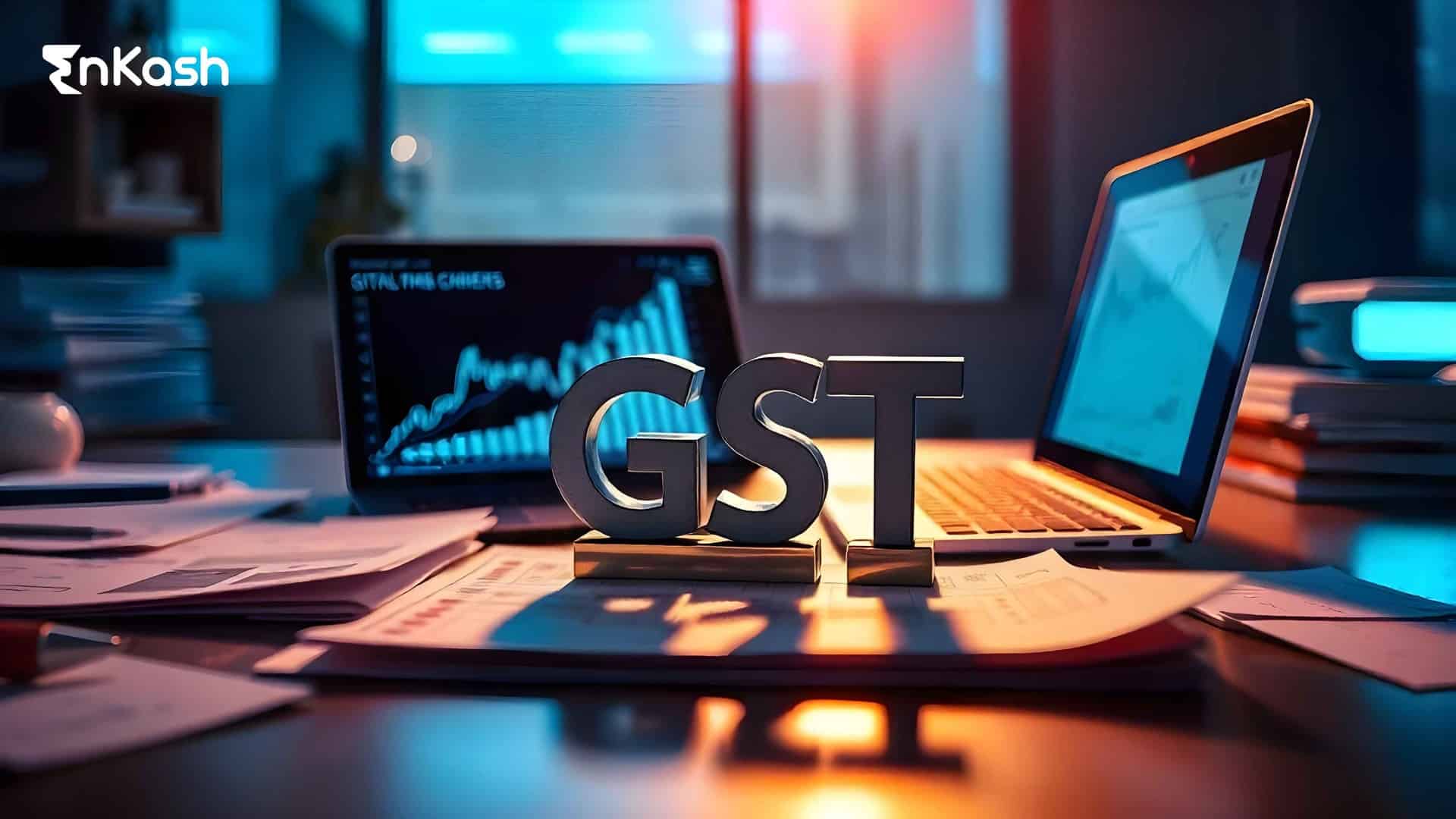Running a business in India presents numerous opportunities, but also entails its own set of responsibilities. One of the key aspects of complying with regulations is understanding and efficiently managing your Goods and Services Tax Returns. With numerous forms and varying due dates, it can feel overwhelming at times. But fear not, fellow entrepreneur! This comprehensive guide will break down the different types of GST returns, their filing deadlines, and everything else you need to stay compliant and penalty-free.
What is a GST return?
A GST (Goods and Services Tax) return is a crucial document that serves as a detailed report of a business’s financial activities related to GST. It’s essentially a summary of all the transactions that a business has made within a specific tax period, typically a month or a quarter.
Think of it as a comprehensive ledger that a business presents to the tax authorities. This ledger doesn’t just show how much money was earned or spent; it specifically focuses on the tax component of these transactions.
Here’s a breakdown of what that means:
- Reporting Sales and Tax Collected: When a business sells a product or provides a service, it collects GST from the customer. The GST return is where the business reports all these sales (also known as “outward supplies”) and the total amount of GST it has collected on them. This establishes the business’s tax liability—the amount it owes to the government.
- Reporting Purchases and Tax Paid: Conversely, when the same business buys goods or services for its operations (known as “inward supplies”), it pays GST to its suppliers. This is a critical part of the GST system, as this tax paid on purchases can be claimed back as an Input Tax Credit (ITC). The GST return is where the business reports all these purchases and the tax it has paid on them.
- Calculating the Final Tax: The core function of the GST return is to determine the final tax liability. This is done by a simple calculation.
Tax Collected on Sales − Tax Paid on Purchases (Input Tax Credit) = Net Tax Payable to the Government
If the tax collected on sales is more than the tax paid on purchases, the business must pay the difference to the government. If the tax paid on purchases is more, the business may be eligible for a refund or can carry forward the credit to the next tax period.
In essence, the GST return is the mechanism through which the government tracks tax compliance, and the business ensures it is only paying the net amount of tax, benefiting from the seamless flow of credit inherent in the GST system. Accurate and timely filing is not just a legal requirement; it’s essential for a business to maintain a healthy financial standing and avoid penalties.
Types of GST Returns in India
While there are 13 different GST return forms, not all apply to every business. The specific ones you need to file depend on factors like your registration type, turnover, and business activities. Here’s a breakdown of the different types of GST returns:
GSTR-1: Outward Supplies Details
This monthly return showcases all your sales of goods and services during the month, along with the tax charged, i.e., this return distinguishes between CGST, SGST, and IGST, so businesses must ensure they report taxes under the correct category. Think of it as a detailed invoice log for your outward transactions. It helps the tax authorities track your sales and ensure accurate tax calculations.
GSTR- 3B: Summary Return
This monthly return is the hero of GST compliance for most businesses. It summarizes both your outward and inward supplies (purchases), calculates your tax liability, and lets you pay the taxes directly. It’s a one-stop shop for tax payment and reporting. It ensures that your taxes are paid on time and provides an overview of your tax obligations.
GSTR-4: Composition Scheme
If your annual turnover is less than Rs. 1.5 crore, you might be under the composition scheme. This quarterly return simplifies your filing with a fixed tax rate based on your turnover, simplifying compliance for eligible businesses. This helps small businesses avoid the complexity of regular GST filings by providing a simplified method for tax payment.
GSTR-5: Non-Resident Taxpayers
If you’re a foreign business making taxable supplies in India, this return is your ticket to GST compliance. It’s like GSTR-1 for non-residents. It captures all the details of taxable supplies made by foreign entities, ensuring they comply with GST in India and properly report their sales.
GSTR-5A: ISD Return
This monthly return is filed by OIDAR service providers (like online subscription or streaming services) based outside India but supplying to Indian customers.. This return ensures that businesses providing online services from abroad to Indian customers comply with GST laws.
GSTR-6: Input Tax Credit Return
This monthly return is filed by Input Service Distributors (ISDs) to distribute the input tax credit to their units/branches helps businesses to claim the input tax credit for taxes paid on purchases made under reverse charge, ensuring they are not overtaxed.
GSTR-7: TDS Deductor
If you deduct tax at source (TDS) on certain payments, like rent or professional fees, this monthly return details that information and helps you track and report it. It’s your GST contribution as a tax collector. This return ensures that the TDS deducted is properly reported and paid to the government.
GSTR-8: E-commerce Operator
This monthly return applies to e-commerce platforms like Amazon or Flipkart. It tracks taxable supplies made through its platform. E-commerce operators file this return to ensure that the GST on sales made via their platforms is properly accounted for and remitted.
GSTR-9 & GSTR-9A: Annual Recap
These annual returns offer a consolidated overview of all your monthly/quarterly filings for the financial year. Earlier, GSTR-9A was used for composition scheme taxpayers, but it has been discontinued. Now, composition dealers must file GSTR-4 annually.. They ensure your annual tax liability is accurately represented. These returns allow businesses to rectify any discrepancies and ensure compliance with GST for the entire year.
GSTR-10: Final Return
This final return is filed when your GST registration is cancelled or surrendered. So learn about the GST registration requirements to make this process seamless. It ensures that any remaining tax liabilities are cleared, and your business is formally deregistered from the GST system.
GSTR-11: Refund Claim
If you paid excess tax or faced input tax credit issues, this return allows you to claim refunds on taxes paid for your purchases. This helps taxpayers, such as foreign embassies, recover the GST paid on eligible goods and services purchased in India.
CMP-08: Composition Levy
This quarterly return is filed by taxpayers who have opted for the composition levy scheme, where they pay a fixed tax rate on their turnover instead of calculating and paying GST on individual sales and purchases. It helps businesses under the composition scheme stay compliant with simplified reporting and payment of taxes.
ITC-04: Inter-State B2C Supplies Refund Claim
ITC-04 is a quarterly return filed by manufacturers (principals) to provide details of goods sent to job workers and received back.. It ensures that businesses are not penalized for taxes paid on interstate purchases, helping them recover excess ITC.
Remember, not all types of GST returns apply to all businesses. The ones you need to file depend on your specific registration type and activities.
GST Return Filing Due Dates (as of 2025)
The timelines for filing GST returns are subject to change, but here are the general due dates for various GST returns as of 2025. Businesses need to adhere to these deadlines to avoid penalties and ensure compliance.
GSTR-1: Outward Supplies Details
- Monthly Filers (turnover > ₹5 crore or those who have opted for it): The 11th of the succeeding month.
- Quarterly GST Return Filers (QRMP scheme for turnover up to ₹5 crore): The 13th of the month following the end of the quarter.
GSTR-3B: Summary Return
- Monthly Filers: The 20th of the succeeding month.
- Quarterly Filers (QRMP scheme): The 22nd or 24th of the succeeding month, depending on the taxpayer’s state or union territory.
GSTR-4: Annual Return for Composition Dealers
- The due date for filing GSTR-4 for a financial year is the 30th of
- June of the next financial year. (For example, GSTR-4 for FY 2024-25 is due by June 30, 2025).
GSTR-5: Non-Resident Taxpayers
- The 13th of the succeeding month.
GSTR-5A: OIDAR Service Providers
- The 20th of the succeeding month.
GSTR-6: Input Service Distributor (ISD)
- The 13th of the succeeding month.
GSTR-7: TDS Deductor
- The 10th of the succeeding month.
GSTR-8: E-Commerce Operator
- The 10th of the succeeding month.
GSTR-9 & GSTR-9A: Annual Returns
- The due date is December 31st of the next financial year. (For example, for the financial year 2024-25, the due date is December 31, 2025).
- GSTR-9 is mandatory for taxpayers with an annual turnover exceeding ₹2 crore. However, the government has provided relaxations, and filing may be optional for those below a certain turnover limit.
- GSTR-9A is no longer a mandatory filing for most composition taxpayers, as GSTR-4 has replaced it as the annual return.
GSTR-10: Final Return
- This must be filed within three months from the effective date of cancellation of GST registration or the date of the cancellation order, whichever is later.
CMP-08: Composition Levy
- This quarterly statement and challan for GST payment for composition taxpayers are due on the 18th of the month following the end of the quarter.
Please note:
Return Type |
Filing Frequency |
Due Date |
|---|---|---|
GSTR-1 (Outward Supplies) |
Monthly |
11th of next month |
GSTR-1 (Outward Supplies) |
Quarterly (QRMP) |
13th of the month after quarter end |
GSTR-3B (Summary Return) |
Monthly |
20th of next month |
GSTR-3B (Summary Return) |
Quarterly (QRMP) |
22nd or 24th of next month (based on state/UT) |
GSTR-4 (Annual for Composition Dealers) |
Annual |
30th June of next FY |
GSTR-5 (Non-Resident Taxpayers) |
Monthly |
13th of next month |
GSTR-5A (OIDAR Service Providers) |
Monthly |
20th of next month |
GSTR-6 (Input Service Distributor) |
Monthly |
13th of next month |
GSTR-7 (TDS Deductor) |
Monthly |
10th of next month |
GSTR-8 (E-Commerce Operator) |
Monthly |
10th of next month |
GSTR-9 & 9A (Annual Returns) |
Annual |
31st December of next FY |
GSTR-10 (Final Return) |
One-time |
Within 3 months of GST cancellation |
CMP-08 (Composition Levy) |
Quarterly |
18th of the month after quarter end |
Interest and Late Fee
Filing your GST returns on time is crucial, but sometimes, unforeseen circumstances might lead to delays. While that’s understandable, remember that late filing comes with financial consequences. As of 2025, here are the key things to note:
Interest
Interest is a penalty for the delayed payment of tax. If you have an outstanding GST liability that is not paid by the due date, you will be liable to pay interest.
- Rate of Interest: The interest rate for late payment of tax is 18% per annum.
- Calculation: This interest is calculated on the net tax liability (the amount payable in cash) from the day following the due date until the date of actual payment.
- Wrong ITC Claims: A higher interest rate of 24% per annum is charged if a business wrongly claims and utilizes Input Tax Credit (ITC) or makes an excessive reduction in output tax liability.
Late Fee
Late fees are charged for the delay in filing the return itself, even if there is no tax liability. The late fee structure has been rationalized and is tiered based on the type of return and the taxpayer’s turnover.
GSTR-1 and GSTR-3B
For Nil Returns:
- ₹20 per day (₹10 under CGST and ₹10 under SGST).
- The maximum late fee is capped at ₹500 (₹250 under CGST and ₹250 under SGST).
For Other Taxpayers (with tax liability):
- ₹50 per day (₹25 under CGST and ₹25 under SGST).
- The maximum late fee is capped based on the annual aggregate turnover of the previous financial year:
- Turnover up to ₹1.5 crore: Capped at ₹2,000 (₹1,000 under CGST and ₹1,000 under SGST).
- Turnover between ₹1.5 crore and ₹5 crore: Capped at ₹5,000 (₹2,500 under CGST and ₹2,500 under SGST).
- Turnover exceeding ₹5 crore: Capped at ₹10,000 (₹5,000 under CGST and ₹5,000 under SGST).
GSTR-4 (Composition Dealers)
- For Nil Returns: ₹20 per day, capped at ₹500.
- For Other Taxpayers: ₹50 per day, capped at ₹2,000.
GSTR-9 (Annual Return)
- The late fee for GSTR-9 is ₹200 per day (₹100 under CGST and ₹100 under SGST).
- The maximum late fee is capped at 0.25% of the taxpayer’s turnover in the state or union territory.
Remember:
- Late fees and interest are cumulative. The longer the delay, the higher the financial burden.
- The late fee must be paid in cash and cannot be offset using Input Tax Credit (ITC).
- While late fees have maximum limits, interest continues to accrue until the tax is paid in full.
- Filing even a nil return on time can save you from late fees, even if you have no tax liability for that period.
Does GST Have to Be Paid Monthly?
Yes, the frequency of GST payment depends on the type of GST return and the turnover of the business. Here’s a breakdown:
- Monthly Filing: The GSTR-3B form is mostly used for making monthly GST payments by the majority of businesses. This applies to businesses having a turnover above the prescribed limit, and they have to ensure that they file and pay on time to avoid being penalized.
- Quarterly Filing: The small businesses that are registered under the Composition Scheme and whose annual gross turnover does not exceed Rs. 1.5 crores can apply for GST quarterly. They are required to make GST payments quarterly using CMP-08 and file an annual return through GSTR-4.
What are the Benefits of Timely Filing
Timely filing of GST returns is not just a legal obligation but a strategic business practice that offers a multitude of benefits, ensuring both financial stability and operational efficiency. Here are the key advantages:
1. Avoidance of Penalties and Financial Burdens
- No Late Fees: By filing on time, you completely avoid the late fees that are charged daily for delayed returns. This saves your business from unnecessary financial strain.
- No Interest: Timely filing and payment of tax liability prevent the accrual of interest, which is charged at 18% per annum on the outstanding tax amount.
- Preventing Higher Penalties: Consistent and timely compliance significantly reduces the risk of attracting scrutiny from tax authorities, which can lead to higher penalties and legal action.
2. Seamless Flow of Input Tax Credit (ITC)
- Claiming Your Credit: The GST system is built on the principle of seamless credit flow. Filing your returns on time is essential to claim the Input Tax Credit (ITC) on the taxes you have paid on your purchases.
- Ensuring Vendor Compliance: Your ability to claim ITC is directly linked to your suppliers’ filing their returns correctly. When you file on time, it encourages your suppliers to do the same, as their non-compliance could affect your credit claims. This creates a chain of compliance that benefits everyone.
- Improved Cash Flow: By claiming your ITC promptly, you reduce your net tax liability. This helps maintain a healthy cash flow, as you are not paying the full tax amount from your working capital.
3. Enhanced Business Credibility and Reputation
- Trust with Stakeholders: A consistent record of timely GST filing demonstrates that your business is responsible and trustworthy. This enhances your credibility with customers, suppliers, and financial institutions.
- Improved Creditworthiness: Banks and other lenders often check a business’s GST compliance history when evaluating loan applications. A good compliance record can make it easier to secure loans and credit facilities.
- Access to Government Schemes: Many government tenders and schemes require a clean compliance history. Timely filing ensures your business remains eligible to participate in these lucrative opportunities.
4. Smooth Business Operations and Financial Planning
- Clear Financial Picture: Regular filing requires you to keep accurate records of sales, purchases, and tax liabilities. This gives you a clear, up-to-date snapshot of your business’s financial health, which is vital for making informed decisions.
- Avoiding Legal Notices and Audits: Businesses with a strong track record of compliance are less likely to be subjected to tax audits and notices. This saves you from the time, cost, and stress associated with such proceedings.
- Uninterrupted Business: Continuous non-filing of GST returns can lead to the suspension or even cancellation of your GST registration. This can halt your business operations entirely, as you cannot legally supply goods or services without a valid registration.
Conclusion
Understanding the types of GST returns, their filing process, and due dates is pivotal for businesses aiming for seamless compliance. By staying informed and proactive, businesses can navigate the GST landscape with ease, ensuring financial transparency and contributing to a strong tax ecosystem. Stay informed, and stay compliant!
FAQs
- Who should file GST returns?
Any business or individual registered under GST is required to file GST returns. This includes regular taxpayers, composition scheme taxpayers, non-resident taxpayers, and those registered under TDS or TCS. - How many returns are there under GST?
There are currently 13 GST return forms, ranging from monthly and quarterly returns to annual returns. However, the specific returns you need to file depend on your business profile. - What are GST returns, and why are they important for businesses?
They are mandatory reports to the government, ensuring accurate tax assessment and compliance. Filing them on time helps avoid penalties and ensures smooth business operations. They are essential for businesses as they ensure compliance with tax regulations and help in claiming input tax credits. - How frequently should businesses file their GST returns?
The frequency depends on your registration type and turnover. Most businesses file GSTR-1 monthly and GSTR-3B monthly/quarterly. Consult a tax advisor for specific guidance. - What information and documents are required to file GST returns?
You’ll need details of your sales, purchases, tax rates, invoices, and bank statements. Consult your accountant for specific requirements and maintain proper records to facilitate smooth filing. - Are there any penalties or consequences for late or incorrect GST return filings?
Yes, late filing attracts interest and late fees. Incorrect filing might lead to penalties and tax demands. It’s important to file your returns accurately and on time to avoid these consequences. - Can businesses claim input tax credits on their GST returns? If so, what are the requirements and procedures?
Yes, businesses can claim input tax credits on the GST they paid on their purchases. However, certain conditions and procedures need to be followed to claim ITC. It’s best to consult a tax advisor for specific guidance on ITC claims. - How to determine which GST return form applies to my business?
Each type of GST return form prescribed for business entities contains unique requirements based on the type of registration, annual turnover, and business type. For more information, find professional assistance or visit the appropriate section of the official GST portal. - Is it possible to file GST returns and have no transactions for the period?
A business may not have had any transactions in a particular period, but this does not exempt you from filing a ‘nil return’ for that period. This is to help ensure compliance by avoiding persistent penalties for filing out of the prescribed period, even if the return is a no-activity. - How can I correct a mistake in my GST return?
If you discover any mistakes in the filed GST return, you can file an amendment request in the next return. It is advisable to always have adequate supporting documents to effect changes in the subsequent returns. - What if I don’t file the GST return on time?
Delays in filing can lead to penalties and interest charges. The late fee depends on the return type and turnover. For nil returns, it is ₹20/day (₹10 CGST + ₹10 SGST), and for returns with liability, ₹50/day (₹25 CGST + ₹25 SGST), subject to caps. There will be an increase in interest on any unpaid taxes by 18% per annum.
Note: This blog provides general information and should not be construed as professional tax advice. Always consult a qualified tax advisor for specific guidance on your business’s GST.








